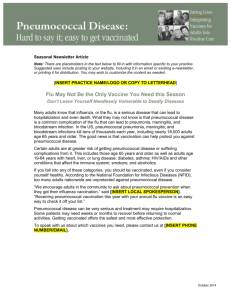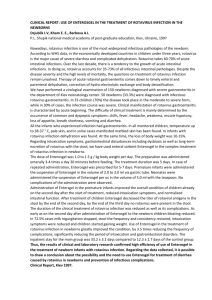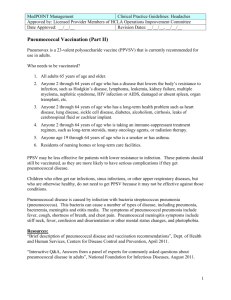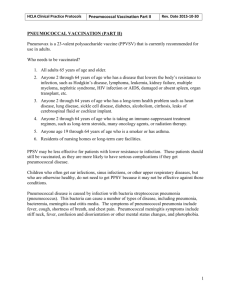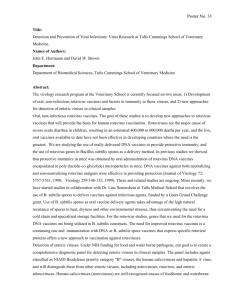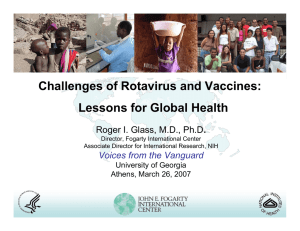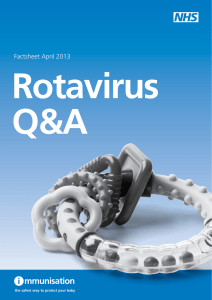CME on Rotavirus and Pneumococcal Diseases (Rotavirus
advertisement
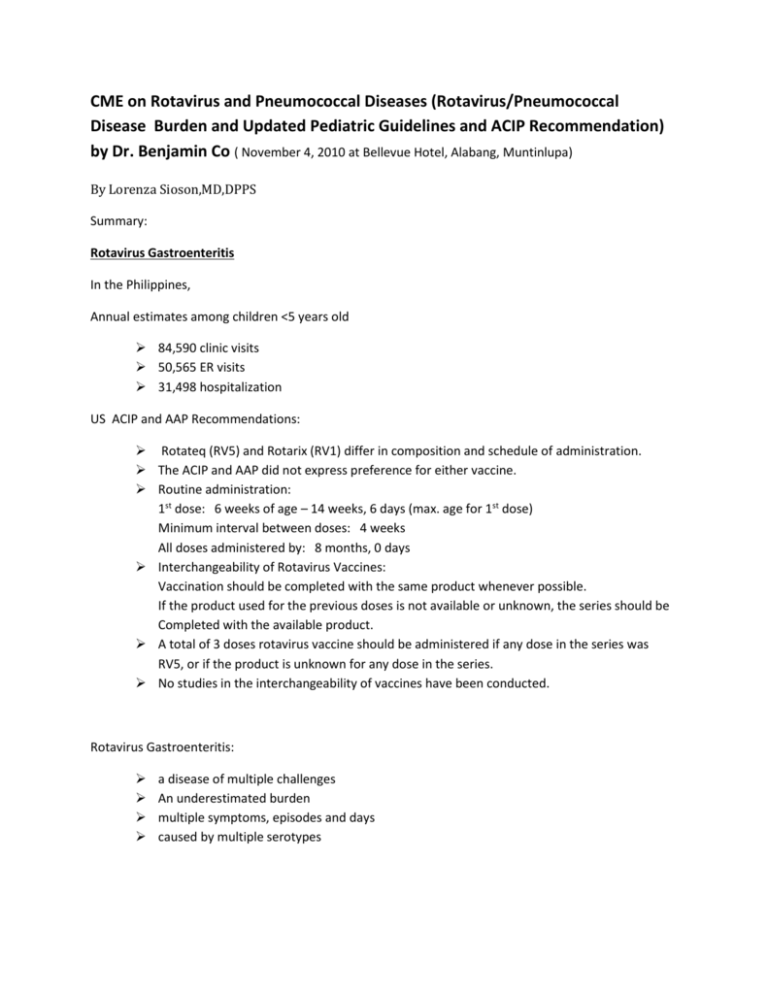
CME on Rotavirus and Pneumococcal Diseases (Rotavirus/Pneumococcal Disease Burden and Updated Pediatric Guidelines and ACIP Recommendation) by Dr. Benjamin Co ( November 4, 2010 at Bellevue Hotel, Alabang, Muntinlupa) By Lorenza Sioson,MD,DPPS Summary: Rotavirus Gastroenteritis In the Philippines, Annual estimates among children <5 years old 84,590 clinic visits 50,565 ER visits 31,498 hospitalization US ACIP and AAP Recommendations: Rotateq (RV5) and Rotarix (RV1) differ in composition and schedule of administration. The ACIP and AAP did not express preference for either vaccine. Routine administration: 1st dose: 6 weeks of age – 14 weeks, 6 days (max. age for 1st dose) Minimum interval between doses: 4 weeks All doses administered by: 8 months, 0 days Interchangeability of Rotavirus Vaccines: Vaccination should be completed with the same product whenever possible. If the product used for the previous doses is not available or unknown, the series should be Completed with the available product. A total of 3 doses rotavirus vaccine should be administered if any dose in the series was RV5, or if the product is unknown for any dose in the series. No studies in the interchangeability of vaccines have been conducted. Rotavirus Gastroenteritis: a disease of multiple challenges An underestimated burden multiple symptoms, episodes and days caused by multiple serotypes Philippine data show that RVGE causes significant morbidity and peaks at a very young age. Pentavalent Rotavirus Vaccine covers the most prevalent local types including G2. Rotavirus vaccination resulted in reduction of diseases after vaccine introduction in the US. Delayed onset of rotavirus season Shorter duration of rotavirus season Reduction of rotavirus positive results Rotavirus vaccination is recommended by WHO, US, ACIP, and PPS, PIDSP and PFV. Pneumococcal Vaccine, Polyvalent (Types 1,2,3,4,5,6B,7F,8,9N,9V,10A,11A,12F,14,15B,17F,18C,19A,20,22F,23F,33F) Estimated annual disease burden worldwide: Pneumococcal infections are a major cause of morbidity and mortality worldwide. Streptococcus pneumonia is the #1 cause of bacterial pneumonia and a leading cause of otitis media. Pneumococcal infections cause >1M annual deaths worldwide. -most deaths in developing countries -even in developed countries, invasive pneumococcal disease carries high mortality in certain population groups (ie. Elderly people, esp. those living in institutions, and patients with chronic organ failure, diabetes, nephritic syndrome, and immunodeficiencies) WHO Recommendations for Pneumococcal Polysaccharide Vaccination: The WHO recommends the polyvalent polysaccharide vaccine for selected groups >2years of age with increased risk of pneumococcal disease, including: - Healthy elderly patients >65 years old, particularly those living in institutions - Patients with chronic organ failure, diabetes, nephritic syndrome, and certain immunodeficiencies, particularly functional or anatomic asplenia.

